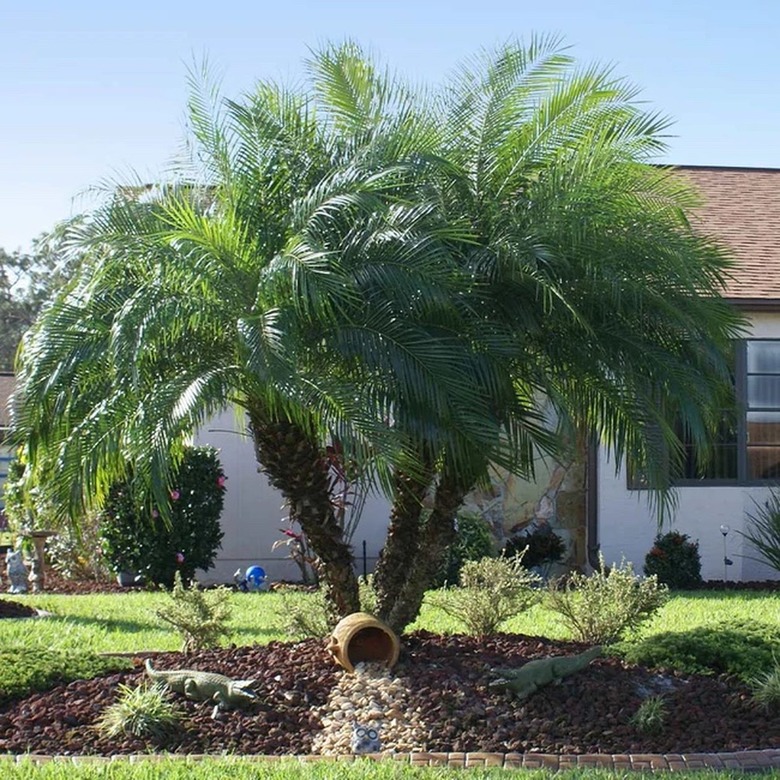How To Plant A Pygmy Date Palm
We may receive a commission on purchases made from links.
Pygmy date palm (Phoenix roebelenii) is a small palm with feathery leaves and a single trunk. This slow-growing plant, which rarely exceeds mature heights of 6 to 10 feet, is a perennial only in U.S. Department of Agriculture plant hardiness zones 10 and 11. Although palms can be planted year-round, plants started in spring and early summer establish roots faster. Keep the roots moist, but not dripping wet, until you're ready to plant.
Things Needed
-
Garden hose
1. Select and Prep the Site
1. Select and Prep the Site
Pygmy palms thrive in full sunlight or partial shade and tolerate nearly any type of well-draining soil. If the soil drains poorly, improve it in an area two to three times the width of the palm's canopy to create a healthy growing environment for the plant's entire root zone. Till the soil to a depth of at least 12 inches and then dig in 1 to 2 inches of compost or other organic material.
2. Dig the Hole
2. Dig the Hole
To plant a pygmy date palm, dig a hole twice as wide using a shovel, but no deeper, than the plant's root ball. Do not place material such as compost, mulch or peat moss in the bottom of the hole, and do not amend the removed soil. The roots may not penetrate the soil around the hole if the structure of the soil in the planting hole differs considerably from the surrounding, native soil. Similarly, water may not flow freely from the amended soil to the native soil. This is why it's beneficial to improve the soil in the entire planting area.
3. Plant the Palm
3. Plant the Palm
Remove the pygmy palm carefully from the container. If the plant is wrapped, remove the burlap and string, wire or twine. To ensure all air pockets are removed, let a garden hose run slowly into the hole while you place the palm in the hole.
The palm should be situated so the top of the root ball is about 1 inch above the surface of the surrounding soil. Otherwise, it will be susceptible to disease and rot if it's planted too deeply. Once the palm is planted, backfill the hole with the removed soil. The palm's fronds are lined with very sharp thorns, so it's best to wear thick gloves when handling.
4. Water the Palm
4. Water the Palm
A soil dam about 2 to 3 inches high around the circumference of the palm and approximately 12 to 15 inches from the trunk helps direct water to the palm's root ball. Water the palm deeply to saturate the root zone immediately after planting. Then keep the root zone evenly moist, but never soggy, for the first four to six months. A 2- to 4-inch layer of mulch will help keep the soil moist, but don't cover the ground within 8 to 12 inches of the trunk.
5. Fertilize the Palm
5. Fertilize the Palm
When you see new growth — usually about two months after planting — the palm is established and will benefit from regular fertilizing. As a general rule, use a slow-release 8-2-12 fertilizer every three months between early spring and early autumn. Sprinkle the fertilizer evenly on the ground under the canopy of the palm at at a rate of 1 to 1 1/2 pounds for every 100 square feet.
